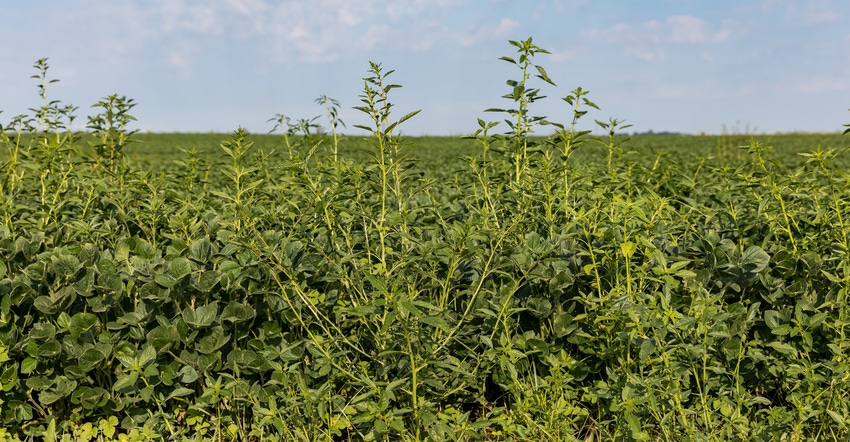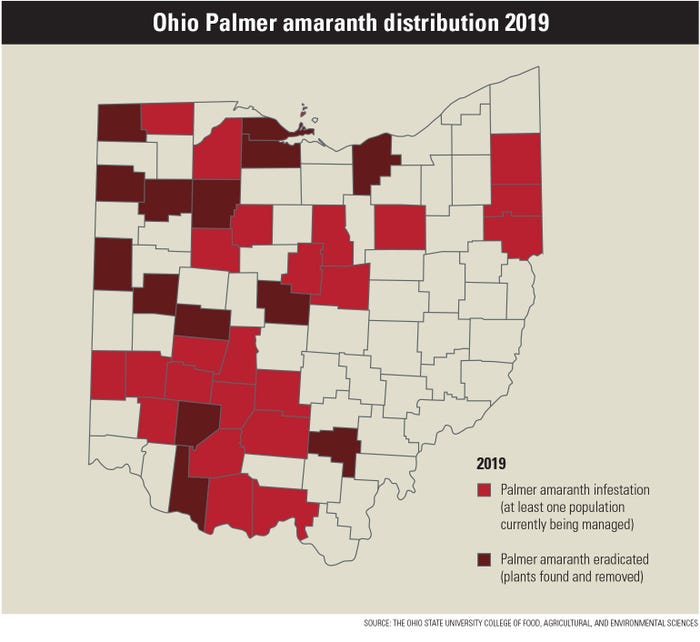June 22, 2020

The Ohio State University Extension Agronomic Crops Network has developed new maps that show current knowledge of waterhemp and Palmer amaranth distribution in Ohio by the Ohio State University Extension Agronomic Crops Network. These are based on information from a survey of OSUE county educators, along with information from samples submitted, and direct contacts, etc. The team still considers any new introductions of Palmer amaranth to be from an external source (brought in from outside Ohio) — hay or feed; infested equipment; and Conservation Reserve Program, cover crop or wildlife seedings.
Palmer is not really spreading around the state, and as the map shows, the team has had a number of introductions that were immediately remediated. The number of counties where an infestation(s) is being managed is still low; and within those counties, the outbreak occurs in only a few fields still.

Many plants called ‘pigweed’
Among the weed photos sent to the Agronomy Team members for identification, a fair number lately have been for the purposes of “pigweed” identification. Pigweed as used here can refer to waterhemp, Palmer amaranth, spiny amaranth, Powell amaranth, and redroot or smooth pigweed (these two are mostly the same for ID and control purposes). It’s almost impossible to tell these apart when they are very small, but it gets easier by the time they are 4 inches tall.

Various resources are available to help with identification, including OSUE’s pigweed ID fact sheet and Youtube video. Identification of pigweed is not necessarily straightforward, so feel free to contact your local extension educator or OSU weed scientists ([email protected] or [email protected]) for help with identification.
Source: OSUE, which is solely responsible for the information provided and is wholly owned by the source. Informa Business Media and all its subsidiaries are not responsible for any of the content contained in this information asset.
You May Also Like




